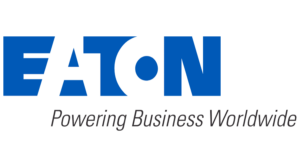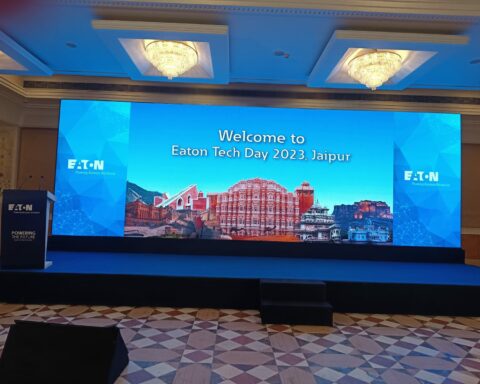Debasish– Eaton is an intelligent power management company dedicated to improving the quality of life and protecting the environment for people everywhere. We are guided by our commitment to do business right, to operate sustainably,and to help our customers manage power ─ today and well into the future. By capitalizing on the global growth trends of electrification and digitalization, we’re accelerating the planet’s transition to renewable energy, helping to solve the world’s most urgent power management challenges, and doing what’s best for our stakeholders and all of society.Founded in 1911, 2023 marks Eaton’s 100th anniversary of being listed on the NYSE. We reported revenues of $19.6 billion in 2021 and serve customers in more than 170 countries.
Our Vision is “To improve the quality of life and the environment through the use of power management technologies and services.” To achieve this vision, we:
Our Aspirational Goals: We’ve set aspirational goals to unify the organization around our shared purpose and around who we are as a company. We aspire to:
Jahnavi– What is the focus and roadmap for Eaton in the e-mobility space? How significant is it for Eaton?
Debasish– With the government’s vision of achieving 100% electric mobility, the electric vehicle industry in India is gaining momentum, with new manufacturing hubs being established and a significant push to improve charging infrastructure. While adoption is still at a nascent stage, it has created an environment where numerous start-ups are emerging throughout the ecosystem. From component manufacturers and charge point charging solutions to battery swapping stations, all are growing to cater to the needs of the EV segment. Established original equipment (OE) players have also laid down their EV strategies and committed substantial investments in manufacturing, research, and development. They are introducing various new models that offer a combination of performance and competitive pricing.
By transitioning to electric vehicles, India benefits on many fronts, including its relative abundance of renewable energy resources and the availability of a skilled workforce in the technology and manufacturing sectors. The Indian government’s push-through schemes and policies arefurther accelerating EV adoption. Simultaneously, consumers are becoming more educated about the total cost of ownership of electric vehicles. With more EVs hitting the roads, the Indian government is promoting the installation of EV charging points in residential complexes, shopping malls, public parking spaces, and other public areas to improve accessibility and convenience for EV owners. These efforts are expected to multiply the adoption of EVs in India, and infrastructure development will be a core part of the ecosystem.
At Eaton, eMobility has become a major focus, aligning with the shift in demand. For over 110 years, we have combined our expertise in electrical, mechanical, and fluid power management to create innovative and sustainable vehicle electrification technologies. Globally, we’re playing a pivotal role in driving adoption and advancing EV technology, leveraging our strength at the convergence of electrical and mechanical power. We’re dedicated to bringing more innovative ideas to life through our R&D centers and manufacturing facilities.
Eaton’s e-mobility product portfolio includes EV Chargers,high-voltage inverters, converters, fuses, onboard chargers, circuit protection units, vehicle controls, power distribution, fuel tank isolation valves, and commercial vehicle hybrid systems. The principal markets for this segment are OEMs and aftermarket customers in passenger cars, commercial vehicles, construction, agriculture, and mining equipment.
Debasish– Sustainability is part of the fabric of our company, and we’re leveraging our leadership to provide safe, reliable,and efficient solutions to our customers to accelerate the global energy transition. Our long-term sustainability strategy focuses on ambitious climate action, resource optimization, and innovative customer solutions. We aim to ensure a healthy planet that supports all our stakeholders – including employees, customers, shareholders, suppliers,and our communities.
We have recently come up with our sustainability report for2022, which features our substantial progress toward our 2030 sustainability goals. We have made extensive progress on 2030 sustainability goals and are on track to meet several targets ahead of schedule.
Here are a few highlights:








